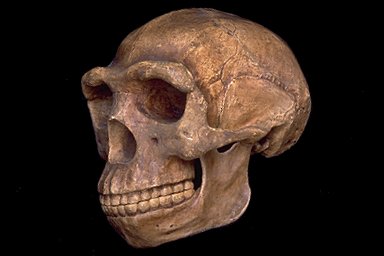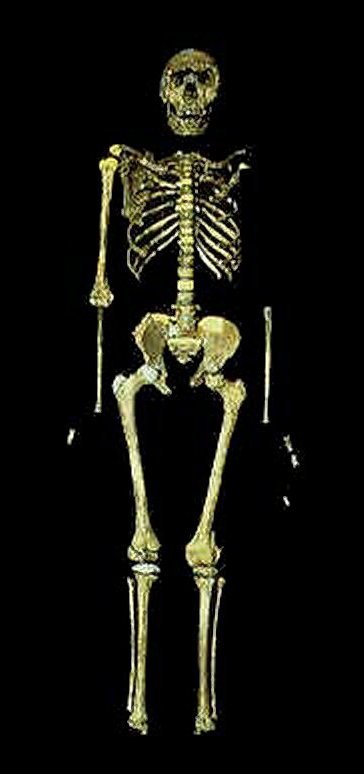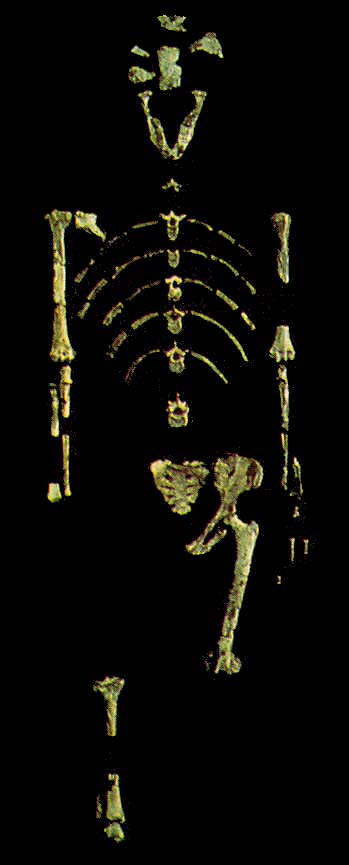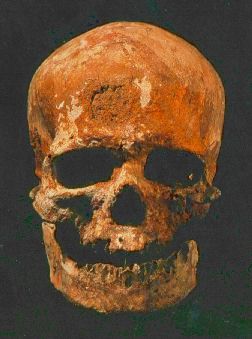EDF 1005 Quiz 2

EDF 1005 Quiz 2 explores individual learning styles, the influence of various factors on learning, and the evolving understanding of intelligence.
- 1.
Learning styles can best be characterized as
- A.
Unique to the individual
- B.
Remarkably similar across cultural groups
- C.
Unimportant compared to teaching style
- D.
Based on time it takes to learn
Correct Answer
A. Unique to the individualExplanation
Learning styles can best be characterized as unique to the individual because each person has their own preferred way of acquiring and processing information. Some individuals may learn best through visual methods, while others may prefer auditory or kinesthetic approaches. Additionally, factors such as personality, background, and previous experiences can also influence an individual's learning style. Therefore, it is important for educators to recognize and accommodate these individual differences in order to optimize the learning experience for each student.Rate this question:
-
- 2.
Learning styles are affected by the _________ abilities of the students.
- A.
Cognitive
- B.
Affective
- C.
Physiological
- D.
All of the above
Correct Answer
D. All of the aboveExplanation
The correct answer is "all of the above" because learning styles can be influenced by cognitive abilities, affective abilities, and physiological abilities. Cognitive abilities refer to how individuals process information and think, affective abilities refer to emotions and attitudes, and physiological abilities refer to physical factors such as sensory preferences. All three of these aspects can impact how a student learns and processes information, therefore affecting their learning style.Rate this question:
-
- 3.
“Locus of control” refers to
- A.
Student need for teacher organization
- B.
A child’s boundaries as determined by parents
- C.
Factors to which a student attributes success or failure
- D.
Physical boundaries set up by the teacher in the class
Correct Answer
C. Factors to which a student attributes success or failureExplanation
The term "locus of control" refers to the factors that a student believes are responsible for their success or failure. It is a psychological concept that describes whether individuals believe they have control over their own destiny or if external factors determine the outcomes. This concept is important in understanding how students perceive their own abilities and the influence they believe they have over their academic achievements.Rate this question:
-
- 4.
A student who says, “I failed the test because the fire alarm went off in the middle of the test” appears to exhibit
- A.
An internal locus of control
- B.
An external locus of control
- C.
An auditory learning style
- D.
Community safety sensitivity and interpersonal intelligence
Correct Answer
B. An external locus of controlExplanation
The student's statement suggests that they attribute their failure on the test to an external factor, in this case, the fire alarm going off. This indicates that they believe that events outside of their control have a significant impact on their outcomes, which aligns with an external locus of control.Rate this question:
-
- 5.
Kinesthetic learners learn best by
- A.
Hearing information spoken aloud
- B.
Whole body movement and participation
- C.
Focusing attention on one narrow topic
- D.
A slower-paced approach
Correct Answer
B. Whole body movement and participationExplanation
Kinesthetic learners learn best by whole body movement and participation because they have a preference for physical activities and hands-on experiences. They learn and retain information more effectively when they can engage their senses and actively participate in the learning process. This allows them to use their body and physical movements to understand and remember concepts and information. By incorporating movement and participation, kinesthetic learners can fully immerse themselves in the learning experience, leading to better comprehension and retention.Rate this question:
-
- 6.
How might you characterize the changing understanding of intelligence?
- A.
Technological advances and computer programs are allowing a more precise measure of intelligence.
- B.
“IQ,” the standard measure of intelligence, has been obscured by “EQ,” which is being used by schools as a replacement for the IQ test.
- C.
We are broadening our understanding of intelligence beyond traditional language and mathematical-logical factors.
- D.
The concept of intelligence really hasn’t changed since the late nineteenth century.
Correct Answer
C. We are broadening our understanding of intelligence beyond traditional language and mathematical-logical factors.Explanation
The answer suggests that the changing understanding of intelligence involves expanding beyond the traditional factors of language and mathematical-logical abilities. This implies that intelligence is now being recognized as encompassing a wider range of skills and capabilities. This shift in understanding is likely influenced by advancements in technology and the recognition of the importance of emotional intelligence (EQ) in addition to intellectual intelligence (IQ).Rate this question:
-
- 7.
Howard Gardner’s “Theory of Multiple Intelligences” refers to
- A.
At least six areas of intelligence in addition to mathematics and verbal intelligence
- B.
The interactive effects of intellectual and emotional intelligences
- C.
He persistent gap between theory and research that defies even the most gifted researcher
- D.
The five basic intelligences requisite for successful school performance
Correct Answer
A. At least six areas of intelligence in addition to mathematics and verbal intelligenceExplanation
Howard Gardner's "Theory of Multiple Intelligences" proposes that there are at least six different areas of intelligence beyond just mathematics and verbal intelligence. This theory suggests that individuals possess different strengths and abilities in areas such as musical, spatial, bodily-kinesthetic, interpersonal, intrapersonal, and naturalistic intelligence. Gardner's theory challenges the traditional view of intelligence as solely measured by IQ or academic performance and emphasizes the importance of recognizing and valuing diverse forms of intelligence.Rate this question:
-
- 8.
By the year 2020, “minority” students will make up approximately what proportion of the school population?
- A.
Fewer than 1 in 10
- B.
Fewer than one-third
- C.
About half
- D.
An overwhelming majority
Correct Answer
C. About halfExplanation
The correct answer is "about half." This suggests that by the year 2020, "minority" students will make up approximately 50% of the school population. This implies that there will be an equal distribution between minority and non-minority students in schools.Rate this question:
-
- 9.
Imagine that you are assigned to teach in a class with some students who come from different cultural backgrounds, and a few students who have been diagnosed as special-needs learners. Perhaps the most effective approach to teaching these diverse students would be
- A.
To realize that students learn better early in the day, and to plan the most challenging lessons for the morning and the less demanding lessons for the afternoon
- B.
To emphasize verbal instruction and storytelling, sometimes called informal education, since special-needs students and diverse cultures all share a common thread: learning by listening
- C.
To avoid direct eye contact with students, which will show your cultural sensitivity while not pressuring your special-needs students
- D.
To invest time in individualizing instruction, since no single strategy will likely meet all these needs
Correct Answer
D. To invest time in individualizing instruction, since no single strategy will likely meet all these needsExplanation
The most effective approach to teaching a class with diverse students from different cultural backgrounds and special-needs learners is to invest time in individualizing instruction. This is because every student has unique learning needs and abilities, and no single strategy will be able to meet all these needs effectively. By tailoring instruction to each student's specific needs, teachers can ensure that every student receives the support and resources they require to succeed in the classroom. This approach promotes inclusivity, personalization, and a focus on individual growth and progress.Rate this question:
-
- 10.
In diverse classrooms, teachers can use generalizations about students from different cultural groups but should avoid stereotypes. Which of the following is a stereotype?
- A.
African-American students tend to communicate orally.
- B.
Asian-American students are highly competitive.
- C.
Female students often personalize knowledge.
- D.
Native American students often prefer cooperative learning.
Correct Answer
B. Asian-American students are highly competitive.Explanation
The statement "Asian-American students are highly competitive" is a stereotype because it assumes that all Asian-American students are highly competitive, which may not be true for every individual. Stereotypes oversimplify and generalize the characteristics of a whole group based on limited information or assumptions. It is important for teachers to recognize and avoid using stereotypes as they can perpetuate bias and unfair treatment towards certain cultural groups.Rate this question:
-
- 11.
Specifies goals, objectives, and evaluations for a child with a disability
- A.
Emotional intelligence
- B.
Learning styles
- C.
Demographic trends
- D.
I.E.P.
Correct Answer
D. I.E.P.Explanation
An Individualized Education Program (I.E.P.) is a document that outlines the specific goals, objectives, and evaluations for a child with a disability. It is a legally binding plan that is developed by a team of professionals, including parents, teachers, and specialists, to ensure that the child receives appropriate educational services and support. The I.E.P. takes into consideration the unique needs and abilities of the child and provides a roadmap for their educational journey. It is an essential tool in promoting the academic and overall development of children with disabilities.Rate this question:
-
- 12.
The principle that no child may be denied appropriate education
Correct Answer
zero rejectExplanation
Zero reject is a principle in education that ensures that no child with disabilities can be denied appropriate education. It means that every child, regardless of their disability, has the right to receive an education that meets their individual needs. This principle is based on the belief that all children have the right to access and benefit from education, and that no child should be excluded or rejected from educational opportunities. Zero reject emphasizes inclusivity and the importance of providing equal educational opportunities for all children, regardless of their abilities or disabilities.Rate this question:
- 13.
Includes traits such as motivation and curiosity
Correct Answer
affective domanExplanation
The correct answer is "affective domain." The affective domain refers to a category in educational psychology that includes traits such as motivation and curiosity. It focuses on the emotional and attitudinal aspects of learning, including feelings, values, and beliefs. This domain is important in understanding and promoting students' emotional engagement and motivation in the learning process.Rate this question:
- 14.
Having exceptionally high creativity, ability, and initiative
Correct Answer
gifted and talentedExplanation
The given answer "gifted and talented" accurately describes someone who possesses exceptional creativity, ability, and initiative. This term is commonly used to refer to individuals who have innate abilities and excel in specific areas, such as academics, arts, or sports. These individuals often demonstrate advanced skills and thinking beyond their age or peers, showcasing their exceptional talents and potential.Rate this question:
- 15.
Awareness of and control over one’s emotions
Correct Answer
emotional intelligence
EQExplanation
Emotional intelligence, also known as EQ, refers to the ability to be aware of and control one's emotions. It involves understanding and managing emotions in oneself and others. This includes recognizing and regulating emotions, empathizing with others, and effectively communicating and problem-solving in emotional situations. Emotional intelligence plays a crucial role in personal and professional relationships, as it helps individuals navigate social interactions, handle stress, and make informed decisions based on emotional cues.Rate this question:
- 16.
Awareness of and control over one’s emotions
- A.
Affective domain
- B.
Gifted and talented
- C.
Emotional intelligence
- D.
Cognitive domain
Correct Answer
C. Emotional intelligenceExplanation
Emotional intelligence refers to the ability to be aware of and have control over one's emotions. It involves understanding and managing one's own emotions as well as being able to recognize and empathize with the emotions of others. This skill is important in various aspects of life, including personal relationships, decision making, and overall well-being. By developing emotional intelligence, individuals can effectively navigate social situations, regulate their emotions, and make more informed choices.Rate this question:
-
- 17.
A major assumption of multicultural education is that
- A.
Bilingual education should be implemented in every school
- B.
The school is a melting pot and should assimilate students
- C.
The curriculum should have an Afrocentric focus
- D.
Students should develop positive attitudes toward different cultures
Correct Answer
D. Students should develop positive attitudes toward different culturesExplanation
Multicultural education assumes that students should develop positive attitudes toward different cultures. This means that the education system should promote understanding, respect, and appreciation for diverse cultures and backgrounds. It emphasizes the importance of valuing and celebrating cultural diversity, fostering inclusivity, and promoting cultural awareness and sensitivity among students. By developing positive attitudes toward different cultures, students can become more open-minded, tolerant, and respectful individuals, which is crucial in today's interconnected and diverse world.Rate this question:
-
- 18.
From the articles on the webpage Lucy and African Eve: Some scientists believe that at some point humans nearly became extinct and that's why there is so much less genetic diversity among humans than among our closest cousins, the chimpanzees.
- A.
True
- B.
False
Correct Answer
A. TrueExplanation
Some scientists believe that humans nearly became extinct at some point, which is why there is less genetic diversity among humans compared to chimpanzees. This suggests that humans went through a population bottleneck, where the population size drastically reduced, leading to a decrease in genetic variation. This phenomenon could have been caused by natural disasters, diseases, or other catastrophic events that significantly impacted the human population.Rate this question:
-
- 19.
From the articles on the webpage Lucy and African Eve: In terms of overall body size, brain size and skull shape, "Lucy" resembles a chimpanzee.
- A.
True
- B.
False
Correct Answer
A. TrueExplanation
The given statement is true because according to the articles on the webpage, "Lucy" shares similarities with chimpanzees in terms of overall body size, brain size, and skull shape. This suggests that Lucy may have had similar physical characteristics to chimpanzees, indicating a closer evolutionary relationship between the two species.Rate this question:
-
- 20.
From the articles on the webpage Lucy and African Eve: Because of its association with tools, the earliest humans are called Ardipithicus ramidus, meaning _handy man._
- A.
True
- B.
False
Correct Answer
B. FalseExplanation
The correct answer is False because the statement is not supported by the information provided in the articles on the webpage Lucy and African Eve. The articles do not mention Ardipithicus ramidus being called "handy man" due to its association with tools. Therefore, the statement is incorrect.Rate this question:
-
- 21.
The fossil remains of the "Turkana Boy" is probably best represented by this species
- A.
Homo habilis
- B.
Australopithecus robustus
- C.
Homo sapiens
- D.
Homo ergaster
Correct Answer
D. Homo ergasterExplanation
The fossil remains of the "Turkana Boy" are best represented by Homo ergaster because this species is known to have lived in East Africa around the same time period as the fossil was found. Homo habilis and Australopithecus robustus are not as closely related to the Turkana Boy fossil, and Homo sapiens appeared much later in history.Rate this question:
-
- 22.
This is a skull recomposition of which hominid species?
Correct Answer
Australopithecus africanus,
Taung ChildExplanation
The correct answer is Australopithecus africanus, Taung Child. The Taung Child is a fossilized skull of a young hominid that was discovered in South Africa in 1924. It is classified as Australopithecus africanus, which is an extinct species of early human ancestors. The Taung Child is significant because it provided the first evidence of early hominids walking upright, challenging the prevailing belief at the time that human evolution began with a large brain size.Rate this question:
- 23.
This is a skull recomposition of which hominid species?
Correct Answer
H. erectus,
Homo erectus,
Peking manExplanation
The correct answer is H. erectus, Homo erectus, Peking man. This suggests that the skull recomposition belongs to the hominid species Homo erectus, also known as Peking man.Rate this question:
- 24.
This is skeleton of which hominid species?
Correct Answer
H. erectus
Homo erectus
Turkana BoyExplanation
The correct answer is H. erectus, Homo erectus, Turkana Boy. This is because Turkana Boy refers to the fossilized remains of a Homo erectus individual found in Turkana, Kenya. Homo erectus is a hominid species that lived approximately 1.9 million to 143,000 years ago. The Turkana Boy fossil provides valuable insights into the physical characteristics and behavior of this species.Rate this question:
- 25.
This is skeleton of which hominid species?
Correct Answer
lucy
australopithecus afarensis,
a. afarensisExplanation
The correct answer is a combination of "lucy" and "australopithecus afarensis" or "a. afarensis". Lucy refers to the famous fossilized skeleton of an australopithecus afarensis, which is a hominid species. This species is significant because it provides valuable insights into human evolution, as it is believed to be one of our early ancestors.Rate this question:
- 26.
This is a skull recomposition of which hominid species?
Correct Answer
Australopithecus afarensis
A. afarensis
a. afarensisExplanation
The correct answer is Australopithecus afarensis, A. afarensis, a. afarensis. This is because Australopithecus afarensis is the full scientific name of the hominid species being referred to. A. afarensis and a. afarensis are abbreviations or shorthand versions of the same species name.Rate this question:
- 27.
Which hominid pecies is this?
Correct Answer
Homo rudolfensis
H. rudolfensisExplanation
The given answer states that the hominid species in question is Homo rudolfensis, also known as H. rudolfensis. This suggests that the species being referred to is Homo rudolfensis, which is a hominid species.Rate this question:
- 28.
Which Hominid species is this
Correct Answer
Homo heidelbergensis
H. heidelbergensis
Rhodesian ManExplanation
The correct answer is Homo heidelbergensis, H. heidelbergensis, Rhodesian Man. Homo heidelbergensis is the name of a hominid species that lived around 700,000 to 200,000 years ago. H. heidelbergensis is an abbreviated form of the same name. Rhodesian Man is another term used to refer to the same species, as some of the earliest fossils of Homo heidelbergensis were found in Rhodesia, which is now known as Zimbabwe. Therefore, all three terms refer to the same hominid species.Rate this question:
- 29.
Which hominid species is this
Correct Answer
Homo neanderthalensis
H. neanderthalensis
neanderthalExplanation
The correct answer for this question is Homo neanderthalensis, H. neanderthalensis, neanderthal. These are all different ways to refer to the same hominid species, which is commonly known as Neanderthal.Rate this question:
- 30.
Which hominid species is this
Correct Answer
Homo habilis
H. habilis
the handy manExplanation
The correct answer is Homo habilis, H. habilis, the handy man. Homo habilis is a species of hominid that lived approximately 2.4 to 1.4 million years ago. They are considered the earliest known species in the genus Homo and are known for their tool-making abilities, which earned them the nickname "the handy man". H. habilis had a smaller brain size compared to modern humans but showed advancements in their ability to use tools, suggesting a significant step in human evolution.Rate this question:
- 31.
This species of hominid is the oldest confirmed European hominids. Many scientists , however, feel it may belong to another species.
- A.
Homo ergaster
- B.
Homo erectus
- C.
Homo heidelbergensis
- D.
Homo antecessor
- E.
Homo sapiens sapiens
Correct Answer
D. Homo antecessorExplanation
Homo antecessor is considered the oldest confirmed European hominid species. However, some scientists argue that it may actually belong to a different species. This suggests that there is ongoing debate and uncertainty among scientists about the classification of this particular hominid.Rate this question:
-
- 32.
Which of the following hominid species was possibly capable of simple speech
- A.
Ardipithecus ramidus http://www.proprofs.com/quiz-school/editquiz.php?id=56445
- B.
Australopithecus anamensis
- C.
Australopithecus africanus
- D.
Homo habilis
- E.
Australopithecus afarensis
Correct Answer
D. Homo habilisExplanation
Homo habilis is considered to be possibly capable of simple speech because they had a larger brain size compared to earlier hominid species. Their brain size and structure suggest that they had the necessary cognitive abilities for basic communication and language development. Additionally, Homo habilis had a more advanced vocal tract, which could have allowed them to produce a wider range of sounds necessary for speech. While there is no direct evidence of their speech capabilities, these factors indicate that Homo habilis may have had the potential for simple speech.Rate this question:
-
- 33.
This skeleton is an example of which species of hominid ?
Correct Answer
homo sapiens sapiens
cro-magnon
homo sapiensExplanation
The correct answer is Homo sapiens sapiens. This is the scientific name for modern humans, the species to which we belong. Cro-Magnon is a subgroup of Homo sapiens sapiens, referring to a specific population of early modern humans who lived in Europe during the Upper Paleolithic period. Homo sapiens is the broader species category that includes both modern humans and our extinct ancestors.Rate this question:
Quiz Review Timeline +
Our quizzes are rigorously reviewed, monitored and continuously updated by our expert board to maintain accuracy, relevance, and timeliness.
-
Current Version
-
Mar 18, 2023Quiz Edited by
ProProfs Editorial Team -
Aug 20, 2009Quiz Created by
Jmcnair
 Back to top
Back to top











